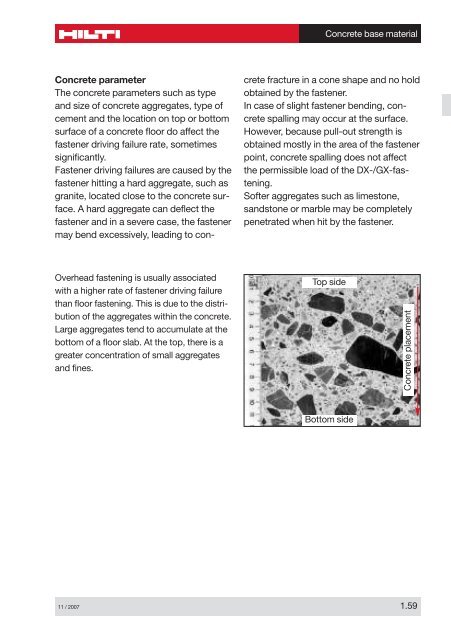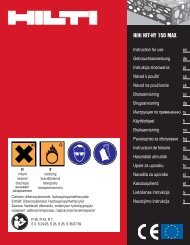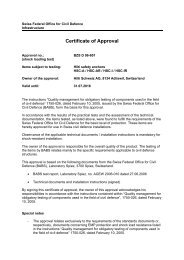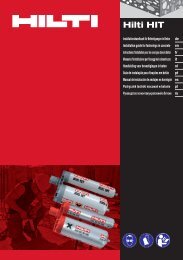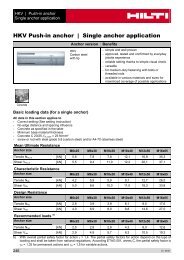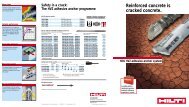00 Contents - Hilti Svenska AB
00 Contents - Hilti Svenska AB
00 Contents - Hilti Svenska AB
You also want an ePaper? Increase the reach of your titles
YUMPU automatically turns print PDFs into web optimized ePapers that Google loves.
Concrete parameter<br />
The concrete parameters such as type<br />
and size of concrete aggregates, type of<br />
cement and the location on top or bottom<br />
surface of a concrete floor do affect the<br />
fastener driving failure rate, sometimes<br />
significantly.<br />
Fastener driving failures are caused by the<br />
fastener hitting a hard aggregate, such as<br />
granite, located close to the concrete surface.<br />
A hard aggregate can deflect the<br />
fastener and in a severe case, the fastener<br />
may bend excessively, leading to con-<br />
Overhead fastening is usually associated<br />
with a higher rate of fastener driving failure<br />
than floor fastening. This is due to the distribution<br />
of the aggregates within the concrete.<br />
Large aggregates tend to accumulate at the<br />
bottom of a floor slab. At the top, there is a<br />
greater concentration of small aggregates<br />
and fines.<br />
Concrete base material<br />
crete fracture in a cone shape and no hold<br />
obtained by the fastener.<br />
In case of slight fastener bending, concrete<br />
spalling may occur at the surface.<br />
However, because pull-out strength is<br />
obtained mostly in the area of the fastener<br />
point, concrete spalling does not affect<br />
the permissible load of the DX-/GX-fastening.<br />
Softer aggregates such as limestone,<br />
sandstone or marble may be completely<br />
penetrated when hit by the fastener.<br />
Top side<br />
Bottom side<br />
11 / 2<strong>00</strong>7 1.59<br />
Concrete placement


